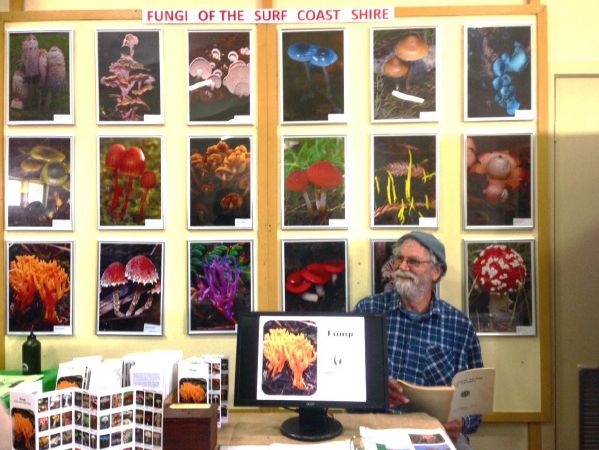One of Angair’s main purposes is to document the natural history of our district.
The late Mary White recorded most of the plants, birds & animals, and published the information in Anglesea – a Natural History Study (ANHS), which is still available from Angair, and is regularly updated. One topic Mary didn’t cover in any detail was Fungi. To fill in this gap, I have been collecting fungi for the last four years, with the help of various members of the Field Naturalists Club of Victoria’s Fungi Group. In particular, Richard Hartland deserves a mention – his knowledge is amazing. We have been exploring together, occasionally with other Angair members, and have collected over 600 specimens, mostly those which have already been named.
ANHS had no specific boundary, just the Anglesea & Aireys Inlet District, so for the purposes of this project we have covered the Surf Coast Shire. Of course, fungi enjoy wetter environments, so many come from around Lorne, but most of us visit the tracks & waterfalls there anyway. We found few fungi from the northern areas in the shire. All collections are documented and photographed, with the details passed on to Fungimap, the national recording system for fungi, for checking. From there they are added to the Atlas of Living Australia, the national recording system for all living things.
We have created a brochure with pictures of 108 of the local species, which we launched at the Wildflower Show this year.

Our aim is to help Angair members and others identify some of our local fungi. If you didn’t get to the Show, you can pick one up from the Angair Natural History Centre when the library is open. The brochure is also available for download, and hopefully, a comprehensive section on fungi will be added to our web page soon. In the meantime, all records are in the Angair library.